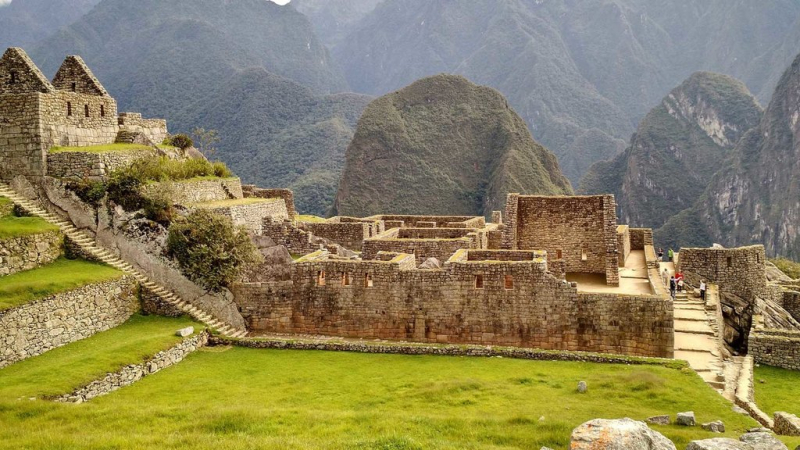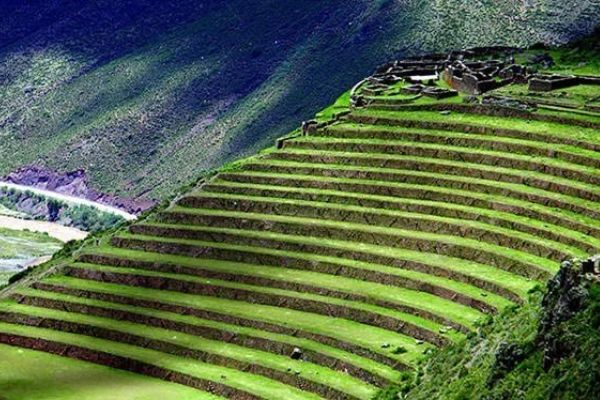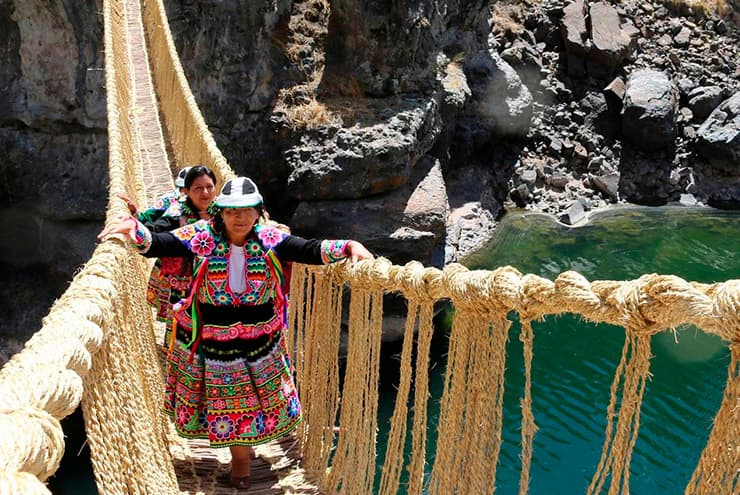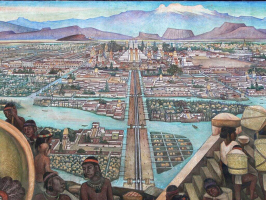Top 9 Major Achievements Of The Ancient Inca Civilization
The Inca Civilization, regarded as the largest empire in Pre-Columbian America, is most recognized for being considerably ahead of its time in many human ... read more...undertakings, particularly masonry construction. We'll look at the 9 Major Achievements Of The Ancient Inca Civilization in this article.
-
Around the 16th century, the Inca civilization is thought to have achieved its pinnacle. Before the arrival of Europeans in the region in 1532, the Inca Empire was unquestionably the biggest continent America had ever seen. The Inca Empire can be traced back to the Andean culture, which existed between the fourth and fifth centuries BC. The Andeans are often regarded as one of the few civilizations in history to emerge from the ground up.
Around the 12th century, the Incas emerged in what is now Peru. Around the beginning of the 15th century, real and significant expansion began. Everything started under the time of Inca monarch Pachacuti, who went on a conquest rampage throughout the region. For a time, Pachacuti's successors did an excellent job of holding the captured regions together. The Inca kings ruled over enormous swaths of what is now Bolivia, Peru, Chile, and parts of Columbia and Argentina during its apex. Historians believe that the Inca Empire's territory spanned 2.1 million square kilometers. And the empire was home to more than 12 million people.
The Andean civilization included the Inca people. Around the 12th century, they were a pastoral tribe who lived in the Cusco region of modern-day Peru. The Inca monarch Pachacuti began a series of conquests in the middle of the 15th century that were continued by his successors to combine most of the Andean tribes into the Inca Empire. The Inca Empire spanned much of modern-day Peru, Chile, Ecuador, and Bolivia, as well as northwest Argentina and southwest Columbia at its peak. The Inca empire was the greatest empire in pre-Columbian America, covering more than 2 million square kilometers and housing a population of roughly 12 million people. It was equivalent to Eurasia's ancient empires, and it was perhaps the world's largest empire in the early 16th century.

Photo: learnodo-newtonic.com 
Photo: kimkim.com -
Machu Picchu was erected in 1460 atop a mountain crest nearly 2,500 meters above sea level as a palace for the famed Inca ruler Pachacuti. It was constructed between the Huayna Picchu and Machu Picchu mountains. Here is one of the major achievements of the ancient Inca civilization.
Many monuments on the site provide insight into the lives of the Incas. The Intihuatana Stone, the Temple of the Sun, and the Room of the Three Windows are examples of these monuments. The Incas built several beautiful cities, the majority of which were destroyed by the Spanish. Machu Picchu, which was rediscovered in 1911, was one of the Inca sites that escaped the Spanish. It is thought to have been built as an estate for the Inca monarch Pachacuti and is located on a mountain ridge 2,430 meters (7,970 feet) above sea level in Peru's Cusco Valley.
Machu Picchu is one of the most spectacular locations in the world, not just in South America; it is a perfect example of the Inca's incredible technical prowess. The Intihuatana stone, which is built so that the sun rises almost directly above the pillar on November 11 and January 30, casting no shadow at all; the Temple of the Sun, whose windows, rock, and sun precisely align on the summer solstice; and the Room of the Three Windows, which overlooks the sunrise and the main square of Machu Picchu's fortress. Machu Picchu was designated a World Heritage Site by UNESCO in 1983, and it was named one of the New Seven Wonders of the World in a poll that received more than 100 million votes in 2007.

Photo: khoahocphattrien.vn 
Photo: english.newstracklive.com -
The Incas excelled in civil and hydraulic engineering, and their knowledge in these fields is regarded as advanced and comprehensive. Canals, fountains, aqueducts, and drainage systems were among the remarkable waterworks they constructed. Aqueducts built by the Incas were made of stone and were watertight. They were primarily utilized to provide fresh water to cities and to irrigate agricultural terraces. One Inca aqueduct, which connected the mountains to the sea, was 360 miles (579 kilometers) long and 13 feet (4 meters) deep. Some of the Inca's aqueducts are still in operation today, centuries after they were built. Tambomachay is made up of a network of aqueducts, canals, and waterfalls that run through the terraced rocks near the Inca city of Cusco. Machu Picchu, Moray, and Tipon are among the other Inca sites where outstanding works of hydraulic engineering can be witnessed.
The Incas did not employ terrace farming as a method of increasing crop productivity. The Incas were able to channel water from nearby rivers to irrigate their farmlands thanks to their engineering prowess. They did this by digging water canals through the steep terrain to supply water to the farmlands. All of this was made feasible by the Incas' cutting-edge hydraulic systems.

Photo: learnodo-newtonic.com Video: Inkayni Peru Tours -
The Inca Empire is well renowned for possessing the biggest road system in pre-Columbian America, with thousands of kilometers of highways connecting a realm of over 2.6 million square kilometers which is one of the major achievements of the ancient Inca civilization.
The Inca emperors needed a way to connect diverse sections of their vast empire in order to administer it. As a result, they built an intricate road system that covered 40,000 kilometers (25,000 miles) and allowed access to nearly 3,000,000 square kilometers (1,200,000 square miles) of land. It is divided into two main routes: the western route, which follows the coast, and the eastern route, which follows the Andes highlands interior. The two main highways were connected by shorter roadways. The Inca road system was constructed across some of the world's most difficult terrain, ranging from coastal deserts to high plateaus, mountain ranges, and deep valleys. This, together with the fact that the roads are still in fine shape after centuries of use, attests to the Inca's outstanding engineering abilities. The Inca road system, which was the largest and most comprehensive transportation system in pre-Columbian America, is considered one of the greatest engineering feats in history. It was designated as a UNESCO World Heritage Site in 2014.

Photo: learnodo-newtonic.com Video: CGTN America -
The Inca Empire put a great deal of effort into creating agricultural systems that looked promising. Terrace farming, in which farmlands are shaped like steps, is one such practice. This strategy aided the Incas in effectively dealing with erosion caused by the region's high rainfall. They built barriers around and around the farmlands as well. Those walls, in effect, worked as radiators for the crops, retaining heat during the day and releasing it at night to save the crops from dying of frostbite. The Inca's farm terraces were extremely beneficial in preventing erosion as well as mitigating the deadly impacts of landslides.
Terrace farming is a strategy for more efficient farming in which a sloped plane is broken into a sequence of gradually receding flat surfaces, resembling steps. Terrace farming was mastered by the Incas, and Machu Picchu is a prominent illustration of this. The Incas built terraces at Machu Picchu to develop farmland as well as to keep their capital from slipping away due to the region's high rains. The erection of stone retaining walls was the initial step in the construction of terraces. These collected heat from the sun during the day and radiated it out at night, keeping crops from freezing. The terrace's bottom layer was made up of gravel and larger stones; the middle layer was made up of sandy earth; and the top layer was made up of fertile topsoil, which was used to produce vegetables.

Photo: learnodo-newtonic.com Video: Jessica Henwood -
The Incas employed a variety of methods to cross rivers, the most famous of which are their rope bridges. The rope suspension bridge was invented by the Incas without the help of other influences. Suspension bridges, on the other hand, have long been used in Asia's hilly regions.
Natural fibers were woven into threads, which were then braided into even larger ropes to create Inca rope bridges. The rope bridges were ideal for foot transportation because there were no wheeled vehicles. Local villages dismantled and rebuilt the bridges on an annual basis to maintain their strength and durability. Q'iswa Chaka, or Q'eswachaka, spans the Apurimac River at Huinchiri in Peru's Quehue District, and is the sole preserved Inca rope bridge. The region's residents renew the bridge every year to keep their traditions alive. According to tests, Q'eshwachaka can support 16,000 pounds, with the strongest Inca rope bridges capable of supporting 200,000 pounds. At least 150 feet long, the longest Inca rope bridges were longer than any bridge in Europe at the time.
The Inca Empire, like many other civilizations in the region, was not as fortunate as civilizations in Mesopotamia or the Mediterranean when it comes to learning from other civilizations. Some of the bridges had lengths of up to 100 feet, according to reports. The longest rope bridge was around 145 feet long. The Incas may have had the world's longest bridge at the time with that length.

Photo: tourinperu.com Video: Atlas Obscura -
The Inca's storage was known as Qullqa ("deposit, storeroom"). The Inca empire had tens of thousands of qullqas, letting them store more food than any other culture at the time. The cause for this is most likely the region's agricultural unpredictability. Qullqas were built around cities and political centers, as well as along roadways. In times of crop failures and food shortages, they offered food and other necessities to Inca authorities and soldiers on the march, as well as laborers and the general public.
Charqui, or dried beef, and Chuo, or freeze-dried potato, were among the commodities kept in Inca storehouses. This is considered as one of the major achievements of the ancient Inca civilization. The Inca exploited the cold temperatures of the Andes at night to freeze frost-resistant potato cultivars, which they then exposed to the day's bright sunshine. Chuno was particularly long-lasting and could be stored for up to four years in the storehouses. The Inca are credited with being the first to create the freeze-drying technology.

Photo: learnodo-newtonic.com 
Photo: theculturetrip.com -
The Incas did not employ money as a medium of exchange or markets to trade, but they did trade with other countries. Local farmers in the empire worked the land, but they were only allowed to keep one-third of the harvest, with the other two-thirds going to the Inca government and religious authorities. All adult men in the empire were forced to undertake Mita or compulsory public service. Each person was given a specific profession based on their abilities; for example, a competent weaver was assigned to create fabric, while a good runner was assigned to be a charqui. Mita labor was used to construct the Inca constructions. Security, food, housing, clothes, education, periodic feasts, and technical assistance to boost agricultural productivity were all supplied in exchange by the Inca administration. Despite the lack of a currency and an internal market economy, the Inca economic system was extraordinarily successful in building and maintaining a vast empire. It is said that no one in the Inca kingdom went hungry.

Photo: nld.com.vn 
Photo: tin.moi -
The Inca architecture is the most important pre-Columbian architecture and this is also one of the major achievements of the ancient Inca civilization, with some of the finest stone structures of any ancient civilization. Walls with finely cut and shaped stones that are closely placed without mortar are among its beautiful stonework. Even a sheet of paper cannot be placed into the seams because the stones are fitted so precisely. The twelve-angle stone in Cuzco, Peru, is surrounded by twelve other stones and is a remarkable example of advanced Inca construction. The huge stones utilized in Inca structures, some of which weigh over 100 tons, are another striking characteristic. There are a number of hypotheses as to how such enormous stones were carried and placed so precisely. There is, however, no clear explanation. Because the Incas lived in an earthquake-prone area, their structures have unrivaled seismic resistance due to their great static and dynamic stability, as well as the lack of resonance frequencies and stress concentration areas. For over 500 years, they have shown to be earthquake-resistant.

Photo: www.annees-de-pelerinage.com 
Photo: gogeometry.com






























